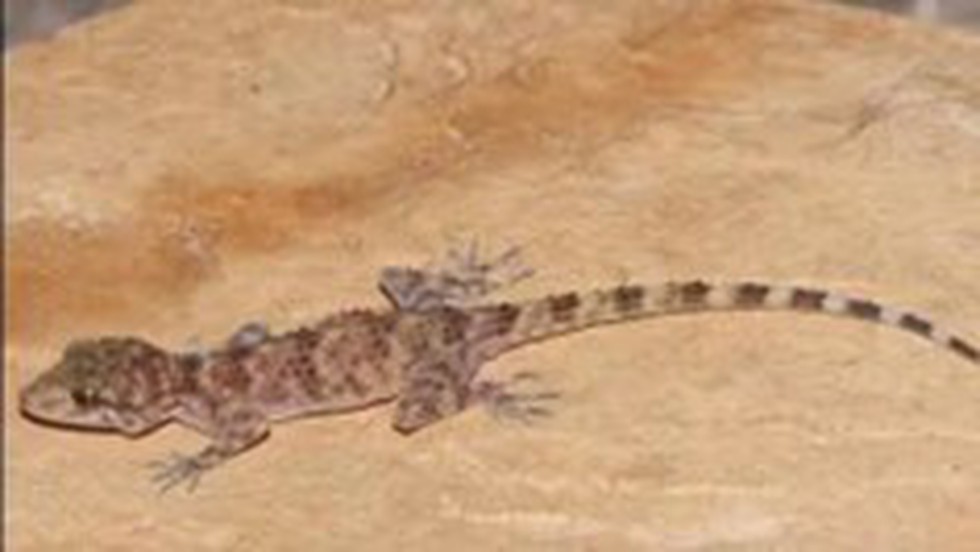
About Cyrtopodion Vindhya:
- The newly discovered naked-toed gecko has been named ‘Cyrtopodion Vindhya’ and it is the fifth endemic species of reptile described in the last fifteen years from the state of Gujarat.
- The new species is named after the Vindhya hill ranges.
- The Palearctic naked-toed geckos of the genus Cyrtopodion are a group of gekkonid lizards distributed across the arid regions of north Africa, Arabia, and Central Asia to northwestern India.
- The taxonomic history of the genus Cyrtopodion has been unstable, and 23 species are currently recognized, with the diversity concentrated in Pakistan and Iran.
- The newly discovered reptile is a nocturnal species, associated with granite boulders.
- Mostly rupicolous( living among rocks) in its habits but can be found on the ground as well.
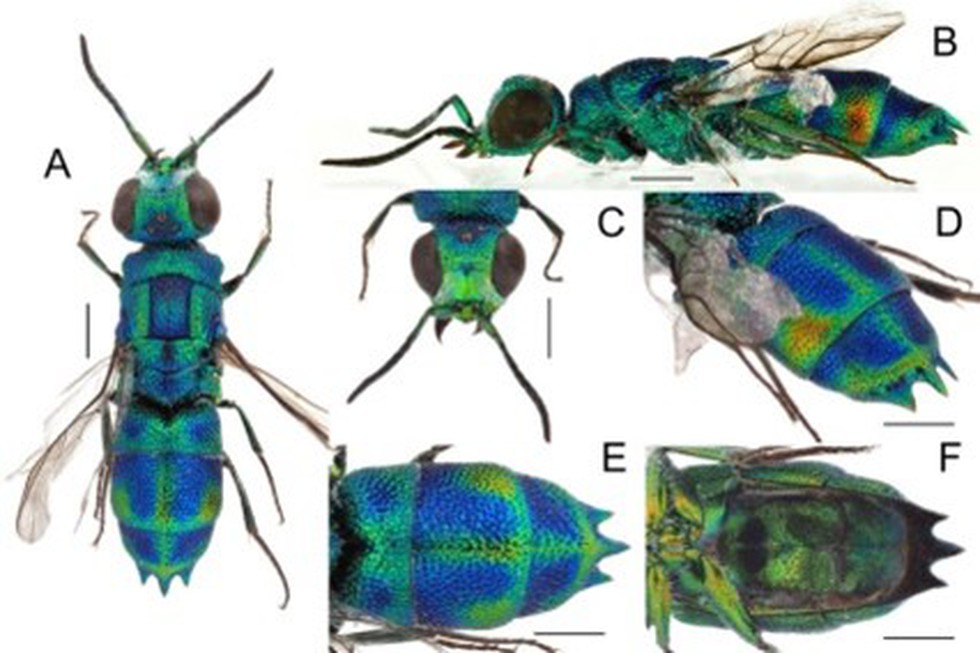
About Trichrysis poseidonia:
- The new species of cuckoo wasp has been named Trichrysis poseidonia.
- poseidonia specimens were collected from Tamil Nadu and Madayipara in Kannur. Another specimen was obtained from Nepal.
- The specific name is derived from Poseidon, the Greek God of the Sea, for the three sharp and pointed apical abdominal teeth seen in this species, recalling the Poseidon’s trident.
- These wasps belong to the family Chrysididae. They are also known as cuckoo wasps because they are kleptoparasitic (stealing food from others) on other wasps and bees as the cuckoo bird.
- The members of the family Chrysididae are more active in warm areas and they are heliophilic (more active in sunlight).
- The laterite plateau of Madayipara is well known for its rich biodiversity and is suitable for these wasps.
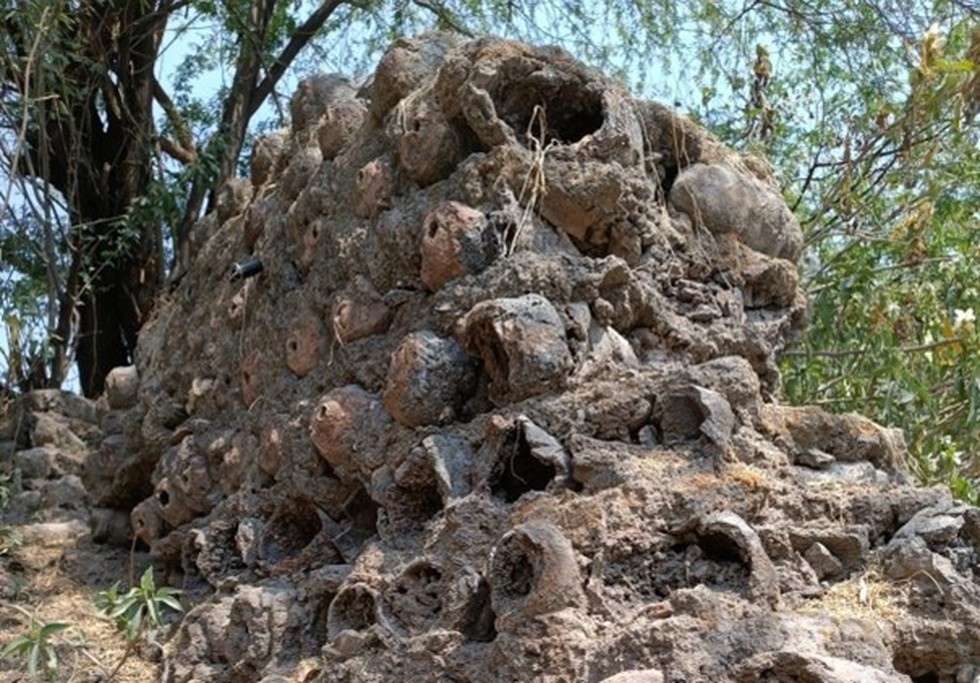
About Jhamarkotra:
- A fossil park at Jhamarkotra located in the state of Rajasthan hosts stromatolites dating back 1.8 billion years, exhibiting a variety of textures and sizes.
- A stromatolite is a layered sedimentary rock created by microorganisms.
- Stromatolites are sometimes called ‘crocodile-skin rock’ due to their unusual textures.
- As such, stromatolite fossils preserve records of cyanobacteria, commonly known as blue-green algae – the earliest life on the planet.
- These organisms developed the ability to photosynthesise and make their food. By doing so, they pumped large quantities of oxygen into the atmosphere of primaeval earth, allowing most other life to evolve and flourish.
- Jhamarkotra’s fossils are phosphate-rich because the trapped sediments were mainly phosphate minerals.
About Zawar
- It is an interesting geo-heritage site that lies some 40 km south of Udaipur which is the world’s oldest known zinc-smelting site.
- The discovery here of earthen retorts – brinjal-shaped, long-necked vessels – is particularly significant: their presence here suggests Zawar had a unique zinc-smelting legacy.
- Zawar’s zinc-smelting operations date back 2,000 years.
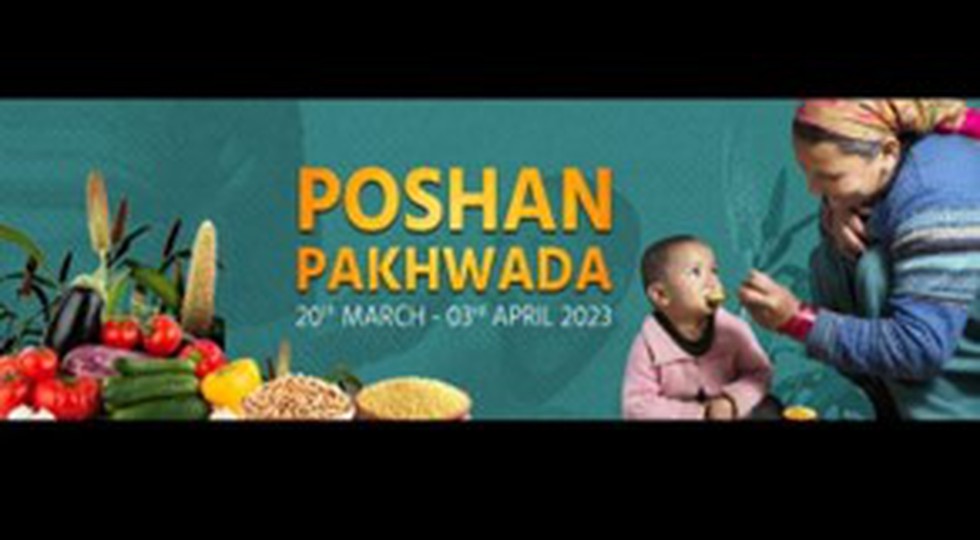
About Poshan Pakhwada:
- The Poshan Pakhwada aims to raise awareness about the importance of nutrition and promote healthy eating habits through Jan Andolan and Jan Bhagidari.
- The theme of this year’s Poshan Pakhwada 2023 is "Nutrition for All: Together Towards a Healthy India".
- With the declaration of 2023 as the International Year of Millets, this year the focus of Poshan Pakhwada will be to popularise ‘Shree Anna’- the mother of all grains, as a valuable asset to address malnutrition.
- The activities during the Poshan Pakhwada will focus, inter alia, on the following key themes:
- Promotion and popularization of Shree Anna / Millets for nutritional- well-being through the organization of drives to link Millet-based foods with supplementary nutrition, Home visits, Diet consultation camps, etc
- Celebration of Swasth Balak Spardha: Celebrate and recognize the ‘Swasth Balak’ or Healthy Child as per defined criteria by generating a healthy spirit of competition for good nutrition good health and well being
- Popularize Saksham Anganwadis: Campaigns will be organized to increase awareness and popularise Saksham Anganwadis with upgraded infrastructure and facilities as centres of improved nutrition delivery and early childhood care and education.
- Nodal Ministry: Ministry of Women and Child Development
What is Poshan Abhiyaan?
- Poshan Abhiyaan, launched by the Prime Minister of India on 8th March 2018, has been instrumental in ensuring people’s participation and bringing the discourse on nutrition to the forefront.
- Poshan Abhiyan was launched to improve nutritional outcomes holistically.
- Behavioural change at the individual and community levels is an important component to achieve the desired goals of a Kuposhan-mukt Bharat.
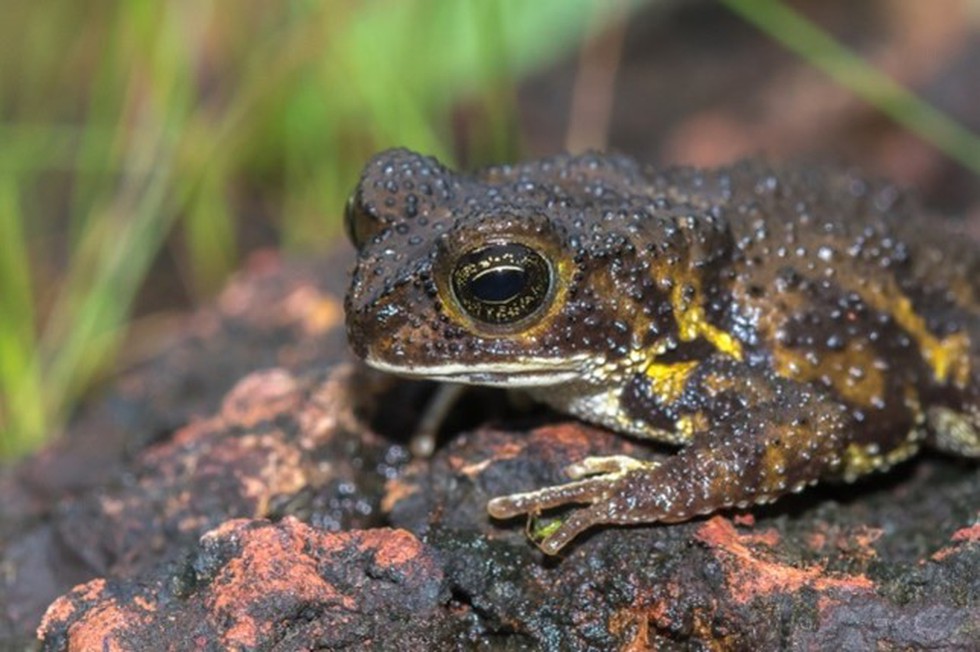
About Batrachochytrium dendrobatidis:
- It is a fungus that affects the keratin in the skin of amphibians, resulting in chytridiomycosis.
- It was initially discovered in Queensland, Australia, in the 1990s after several frog species were found dead.
- The fungus is believed to spread through spores discharged into water from amphibian skin.
- A 2019 study published in the journal Science suggests that fungal infection is to blame for the global population reduction of 39 per cent of frog species.
- It is most prevalent in South and Central America, Australia, and North America.
- It causes death suggesting that the fungus disrupts essential functions of the frog skin (uptake of essential ions, respiration).
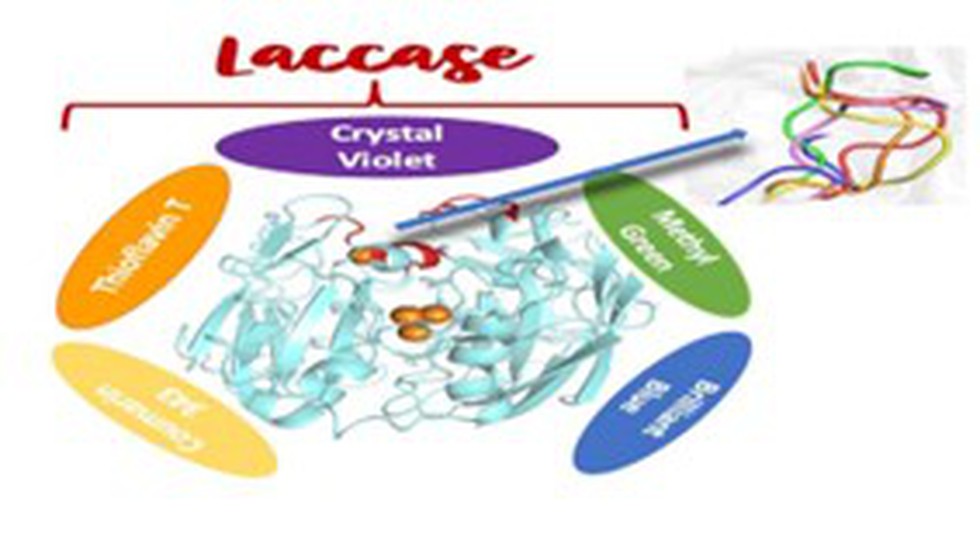
About Enzyme Laccase:
- Laccase is generated by a group of fungi that have been found capable of degrading a variety of hazardous organic dye molecules that are regularly drained into waterbodies after dying clothes in the textile industry.
- This observed characteristic which the scientists termed substrate promiscuity can have deep implications in designing enzyme-coated cassettes for treating heavily dye-polluted water.
- Laccase was known for its capacity to degrade various organic molecules.
- Laccase, generated by a group of fungi, contains 4 copper atoms in two different oxidation states, and degrades substrates through redox reactions, producing only water and the simplest non-virulent or less virulent oxides of carbon, nitrogen and sulphur.
- Hence the scientists saw scope in using it to develop a technology to treat/degrade the dye effluents emanating from textile industries.
- Combining UV/Visible spectroscopy and computer simulations they demonstrated that many organic dye molecules with varying kinetics and wide variation in charge, size and shape can be degraded by the enzyme laccase.
- This substrate promiscuity of laccase offers immense biotechnological potential for a broad-spectrum degrader for industrial dye effluents.
What is enzyme promiscuity?
- Enzyme promiscuity is defined as the capability of an enzyme to catalyze a reaction other than the reaction for which it has been specialized.
- Although the enzyme is known for its specificity, many enzymes are reported to be promiscuous.
What are enzymes?
- An enzyme is a substance that acts as a catalyst in living organisms and regulates the rate at which chemical reactions proceed without being altered in the process.
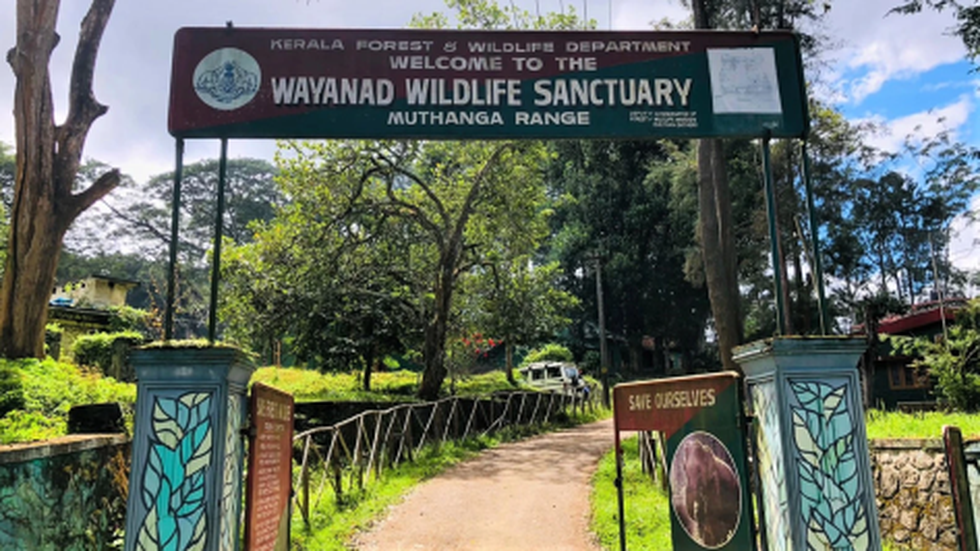
About Wayanad Wildlife sanctuary:
- Wayanad Wildlife Sanctuary is located in Kerala and is an integral part of the Nilgiri Biosphere Reserve.
- This Sanctuary is contiguous to the tiger reserves of Nagarhole and Bandipur of Karnataka and Madhumalai of Tamil Nadu.
- Kabini river which is a tributary of the Kaveri River flows through the sanctuary.
- Flora: It includes moist deciduous forests, West coast semi-evergreen forests and plantations of teak, eucalyptus and Grewelia.
- Fauna: Elephant, Gaur, Tiger, Panther, Sambar, Spotted deer, Barking deer, Wild boar, Sloth bear, Nilgiri langur etc.
Key facts about the Nilgiri Biosphere Reserve
- It harbours a wide spectrum of ecosystem types such as tropical evergreen forests, Montane sholas and grasslands, semi-evergreen forests, moist deciduous forests, dry deciduous forests and thorn forests.
- The major part of the core areas spread over Kerala and Tamil Nadu States.
- Tribal Population:Tribal groups like the Todas, Kotas, Irullas, Kurumbas, Paniyas, Adiyans, Edanadan Chettis, Cholanaickens, Allar, Malayan, etc., are native to the reserve.
- Protected Areas within the Nilgiri Biosphere Reserve are
- The Mudumalai Wildlife Sanctuary, Wayanad Wildlife Sanctuary, Bandipur National Park, Nagarhole National Park, Mukurthi National Park and Silent Valley.

About Venus:
- Venus the second planet from the sun, is the hottest and brightest planet in the solar system.
- Venus is highly visible from Earth due to its reflective clouds.
- Venus and Earth are often called twins because they are similar in size, mass, density, composition and gravity.
- With respect to other planets, Venus and Uranus spin backwardswhich means for these two planets, the sun rises in the west and sets in the east.
What are the findings of the Magellan spacecraft?
- A 2.2 square kilometre volcanic vent on Venus changed shape in eight months, indicating volcanic activity.
- It showed signs of drained lava, hinting at activity and eight months later, radar images indicated that the same vent had doubled in size and the lava lake seemed to have reached the rim.
- The vent is associated with Maat Mons, Venus’s second-highest volcano.
- It sits in the Atla Regio, a vast highland region near Venus’ equator. These changes were likely due to lava flow escaping the vent, hinting at a possible volcanic activity.
Key facts about the Magellan spacecraft
- It was one of the most successful deep space missions of NASA..
- It was the first spacecraft to image the entire surface of Venus and made several discoveries about the planet.

About AFINDEX:
- The first Africa-India Field Training Exercise was held in Pune in March 2019. It saw participation from 20 African nations.
- The first India-Africa Defence Ministers Conclave was held on the sidelines of the DEFEXPO, 2020 in Lucknow.
- The exercise is divided into four phases in which trainers would be initially trained. This would be followed by a humanitarian mine action and a peace-keeping operations phase.
- Maximum use of indigenous equipment is being made during the exercise and new-generation equipment manufactured in India would be showcased during the exercise.
- Objective:
- To continue building upon initiatives taken to strengthen India-Africa relations, with a focus on enhancing peace and security, and creating opportunities to exchange ideas and perspectives.
- Learning from the African experience in cooperative security, management of security crises and conflicts, and promoting a collaborative approach in capacity enhancement of African armies
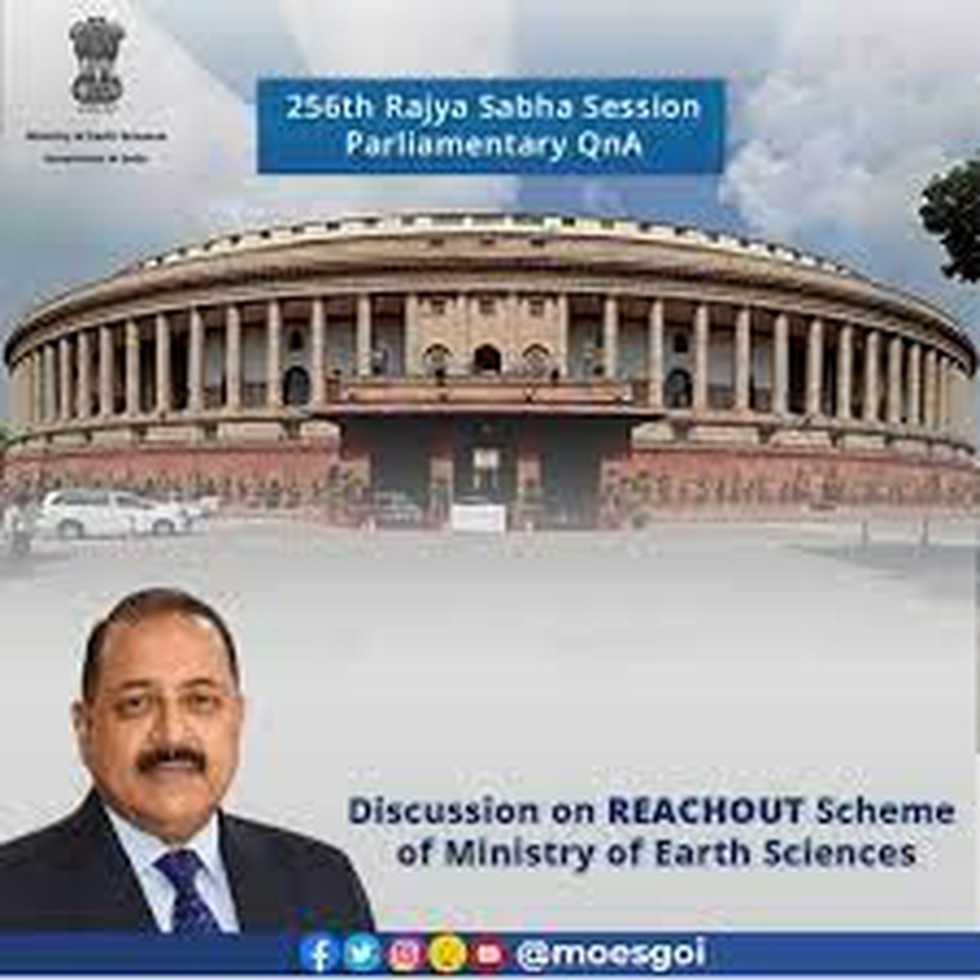
About the REACHOUT scheme:
- The Research, Education and Training Outreach (REACHOUT) scheme consists of
- R&D in Earth System Science (RDESS)
- International Training Centre for Operational Oceanography (ITCOocean)
- Program for Development of Skilled manpower in Earth System Sciences (DESK)
- This scheme is being implemented for the entire country and not State/UT-wise.
- The main objectives of the above sub-schemes are
- Supporting various R &D activities in the thrust areas of different components of Earth System Sciences that are theme and need-based and that would help in attaining the National goals set up for MoES.
- Develop useful collaborations with international organizations for the mutual transfer of advanced knowledge in science and technology in Earth Sciences and to provide services to developing countries.
- Develop skilled and trained manpower in Earth Sciences with the support of academic institutions in the country and abroad.





























































































































































.png)
.png)
.png)
.png)
.png)


.png)
.png)
.png)





.png)
.png)






.png)
.png)
.png)
.png)
.png)
.png)
.png)
.png)
.png)

.png)







.png)
.png)


.png)
.png)
.png)


.png)

.png)
.png)





.jpg)

.png)
.png)


.png)

.png)
.png)
.png)

.jpg)

.jpg)


.png)

.png)
.png)
.png)
.png)
.png)
.png)
.png)
.png)
.png)
.png)




.png)

.png)





.png)
.png)
.png)
.png)
.png)
.png)
.png)
.png)
.png)
.png)
.jpg)
.jpg)

.png)
.png)
.png)
.png)
.png)
.png)
.png)
.png)
.png)
.png)
.png)
.png)
.png)
.png)
.png)
.png)
.png)
.png)
.png)
.png)
.png)
.png)



.png)
.png)

.jpg)
.jpg)


.jpg)
.jpg)
.jpg)
.jpg)
.jpg)

.jpg)








.jpg)
.jpg)
.jpg)
.jpg)
.jpg)














.jpg)
.jpg)







.jpg)


















.jpg)
.jpg)






























































































.jpg)
.jpg)


























.jpg)

.jpg)










.jpg)








.jpg)




.jpg)










.jpg)


















.jpg)












































.jpg)














.jpg)
.jpg)
.jpg)





.jpg)

.jpg)
.jpg)





































































.jpg)


































.jpg)
.jpg)
















































.jpg)












.jpg)


.jpg)




.jpg)
.jpg)
.jpg)

.jpg)
.jpg)
.jpg)
.jpg)

.jpg)
.jpg)
.jpg)

.jpg)
.jpg)
.jpg)
.jpg)
.jpg)
.jpg)
.jpg)
.jpg)

.jpg)


.jpg)
.jpg)
.jpg)
.jpg)
.jpg)
.jpg)
.jpg)
.jpg)
.jpg)
.jpg)











.jpg)
.jpg)





.jpg)
.jpg)
.jpg)
























.jpg)
























.jpg)









.jpg)
.jpg)







.jpg)
.jpg)









































.jpg)
.jpg)
.jpg)
.jpg)
.jpg)

.jpg)
.jpg)
.jpg)
.jpg)
.jpg)


.jpg)
.jpg)
.jpg)
.jpg)
.jpg)

.jpg)
.jpg)
.jpg)
.jpg)
.jpg)
.jpg)
.jpg)
.jpg)
.jpg)
.jpg)
.png)

.png)
.png)

.png)
.png)
.png)
.png)


.jpg)
.jpg)

.jpg)
.jpg)
.jpg)

.png)
.png)
.png)
.png)
.png)
.png)
.png)

.png)
.png)
.png)
.png)
.png)
.png)
.png)
.png)
.png)
.png)





































































-min.png)



.png)




.png)








































